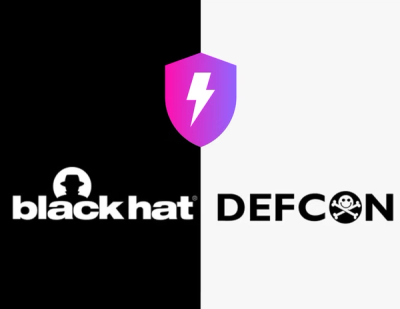
Security News
Meet Socket at Black Hat and DEF CON 2025 in Las Vegas
Meet Socket at Black Hat & DEF CON 2025 for 1:1s, insider security talks at Allegiant Stadium, and a private dinner with top minds in software supply chain security.
Gradient Ascent is just the opposite of Gradient Descent. While Gradient Descent adjusts the parameters in the opposite direction of the gradient to minimize a loss function, Gradient Ascent adjusts the parameters in the direction of the gradient to maximize some objective function.
I got the idea for this while playing basketball, I don't know why or how but this is my attempt to implement it.
pip install gradient-ascent
import torch
from gradient_ascent.main import GradientAscent
class SimpleModel(torch.nn.Module):
def __init__(self):
super(SimpleModel, self).__init__()
self.fc = torch.nn.Linear(1, 1)
def forward(self, x):
return self.fc(x)
# Test the optimizer
model = SimpleModel()
optimizer = GradientAscent(model.parameters(), lr=0.01)
# General some sample data
data = torch.tensor([[2.0]])
target = torch.tensor([[3.0]])
for _ in range(1000):
optimizer.zero_grad()
output = model(data)
# Negative loss as we are maximizing]
loss = -torch.nn.functional.mse_loss(output, target)
loss.backward()
optimizer.step()
print("Final output after training: ", model(data))
For a function ( f(\theta) ), the update step in gradient ascent is given by:
[ \theta_{new} = \theta_{old} + \alpha \nabla f(\theta_{old}) ]
Where:
Algorithm: GradientAscentOptimizer
1. Input:
- Objective function f(θ)
- Initial parameters θ₀
- Learning rate α
- Maximum iterations max_iter
2. For iteration = 1 to max_iter:
a. Compute gradient: ∇θ = gradient of f(θ) w.r.t θ
b. Update parameters: θ = θ + α * ∇θ
3. Return final parameters θ
Non-Convexity: Many problems in deep learning involve non-convex optimization landscapes. Gradient ascent, like gradient descent, can get stuck in local maxima when dealing with such landscapes. Adding mechanisms to escape from these local optima can be necessary.
Momentum: Momentum can be integrated to accelerate gradient vectors in any consistent direction, which can help in faster convergence and also in avoiding getting stuck in shallow local maxima.
Adaptive Learning Rates: The learning rate might need to adapt based on the recent history of gradients, allowing the optimization to move faster during the early stages and slow down during fine-tuning. This is seen in optimizers like AdaGrad, RMSProp, and Adam.
The Gradient Ascent with features like momentum and adaptive learning rates, as discussed, is tailored to handle challenges in non-convex optimization landscapes. Here are some tasks and scenarios where this optimizer would be particularly beneficial:
Maximizing Likelihoods:
Generative Adversarial Networks (GANs):
Game Theoretic Frameworks:
Policy Gradient Methods in Reinforcement Learning:
Eigenproblems:
Feature Extraction and Representation Learning:
Sparse Coding:
For scenarios with non-convex landscapes, the features like momentum help escape shallow local maxima, and adaptive learning rates ensure efficient traversal of the optimization landscape, adapting the step sizes based on the gradient's recent history.
However, while this optimizer can be effective in the above scenarios, one should always consider the specific nuances of the problem. It's essential to remember that no optimizer is universally the best, and empirical testing is often necessary to determine the most effective optimizer for a particular task.
python benchmarks.py
Benchmark 1: 9.999994277954102
Benchmark 2: 1.375625112855263e-23
Benchmark 3: -131395.9375
Benchmark 4: -333186848.0
Benchmark 5: -166376013824.0
Benchmark 6: 0.31278279423713684
Benchmark 7: [1.375625112855263e-23, 1.375625112855263e-23]
Benchmark 8: -28.793724060058594
Benchmark 9: 1.0
Benchmark 10: 0.8203693628311157
MIT
FAQs
Gradient Ascent - Pytorch
We found that gradient-ascent demonstrated a healthy version release cadence and project activity because the last version was released less than a year ago. It has 1 open source maintainer collaborating on the project.
Did you know?

Socket for GitHub automatically highlights issues in each pull request and monitors the health of all your open source dependencies. Discover the contents of your packages and block harmful activity before you install or update your dependencies.

Security News
Meet Socket at Black Hat & DEF CON 2025 for 1:1s, insider security talks at Allegiant Stadium, and a private dinner with top minds in software supply chain security.

Security News
CAI is a new open source AI framework that automates penetration testing tasks like scanning and exploitation up to 3,600× faster than humans.

Security News
Deno 2.4 brings back bundling, improves dependency updates and telemetry, and makes the runtime more practical for real-world JavaScript projects.